Delhi has no mercy. It is a city that covering you in dust will make you rub your eyes, as if they should be wide open to observe all the scenes that it presents everyday. Whether it is to show you something good or bad, India tends to be very entertaining, and the capital is no exception.
(Not) Moving to Delhi
Towards the end of our trip through the Americas, we decided we would move to Delhi. This is where Ashray’s parents have recently settled and we wanted to be close by. After a few days in Delhi, we realized that settling here was no option for us. Going around the world, you see good and bad places and, therefore, learn how to value what’s important for you when it comes to a place to live in. In our case, clean air, clean water and a generally healthy atmosphere comes before anything else. Delhi doesn’t have any of the above and so our stay is temporary, until we get married at the end of February and decide where to go next.
I haven’t started exploring Delhi from a touristic perspective yet, on the contrary, I have been living a pretty regular life which allows me an insight on the real Delhi. We are currently staying with Ashray’s parents and that makes me much more immersed in Indian culture. For instance, in any other place I would have probably signed up for cooking classes to learn something about the local cuisine. Here, I can observe Ashray’s mom. Somewhere else I’d be making plans to visit the touristic hot-spots, but in Delhi I just need to walk around our apartment complex to actually breathe in the vibes of the real people of the real world. Even taking the dog out to poo is a life experience!
At a first glance, there are some things I like about life in India and specifically in Delhi. But there are many others that make it truly hard to picture ourselves creating a home in this harsh city.
Eating India
For example, I love the fact that there are vegetable markets everywhere, even at night. But I hate the fact that, to buy chicken, you’d normally go to a store, choose your piece (aka animal) that is still alive, and they chop it right there in front of you! I have changed my diet substantially, specially if compared to my usual meals throughout Latin America, that used to revolve around beef and chicken. I now eat mostly rice, grains and vegetables. Some chicken and fish occasionally. But if I had to buy the chicken myself and have it slaughtered in front of me, I can tell you I’d be a vegetarian by now. But I am pleased with this new diet and with the fact that there is an immensity of grains and tasty recipes that make sure one doesn’t depend on animal protein. Vegetarian food doesn’t tend to get boring in India either: most of the population is vegetarian and there are endless satisfactory and nutritious options.
Indian food is divided into 2 groups:
1. Non-veg: some people eat vegetarian and non vegetarian food, but they are probably the minority. Non-vegetarian includes mainly chicken dishes. Hindus won’t eat beef as cows are considered sacred (they give milk and you can use them for transportation – therefore, killing them for meat would be minimizing the use of each animal). Muslims won’t eat pig as it is considered a dirty animal. Christians will eat everything, but pork meat is not so common around here.
2. Veg: the majority of Indians will probably fall under this category, that includes vegetarian food and dairy, eggs and other animal derived products that don’t require the life of the animal to go away. Some vegetarians do not eat eggs and you will actually see signs that read “eggless” in donut shops and “Eggless Cakes Cooking Classes” advertising in the papers. Amongst the pure-veg you have some people who are Jain by religion, meaning they are not supposed to eat anything that grows under the earth. That eliminates potatoes, onions (yes, in India, NO ONIONS!!), carrots and other very common ingredients in Indian cuisine. But milk tends to be consumer (and loved) by most.
Indian food is yummy (I can appreciate it now that I am getting used to the spice levels – I used to hate it before), although it has a greasy tendency of being very rich. Luckily enough, I am eating home cooked meals mostly everyday – thanks Anuradha Baruah for that! When you eat outside, you understand why heart related problems are the number 1 killer in this country!
Income Contrasts
When people picture Indian society where I come from, there is a very high likelihood that they think of poverty and trash. Now that I am here, I also think about them!
Let’s start with poverty: it hits you in the face the moment you roam around the streets of Delhi. Either you see someone really poor and think about it or you see someone really rich and still think about it based on the contrast. It is particularly difficult to interact with street kids.
One of my first outings in Delhi was around the centre of the city, Connaught Place, where I was approached by a few little girls trying to sell me pens for some spare change. I could have spent USD 0.20 and buy the pens that I didn’t need but: would they actually get the money? What would this money be used for?! We suggested to the little girls that we would buy them a meal but they refused – they wanted money. And this makes me think that the money doesn’t obviously end in the right hands. Perhaps it’s not even for their parents, as it’s possible that these kids work for some kind of “pimp” that makes them do this and takes the profit. And this is why I wouldn’t give money to streets kids, not here or anywhere else in the world – not to feed this vicious system. Am I helping them in this case? No I am not. But at least I hope I’m not making it worse.
Today in traffic a little girl did some gymnastic moves and asked for coins, window by window. I just rolled down my window and gave her half the Toblerone chocolate I was eating. She couldn’t care less about the treat: “Didi, paisa?!” (Big sister: money?!) No. Money no. And I still had to put up with Ashray’s mocking “You are such a gora… giving a toblerone to a poor kid!! That’s probably the most gourmet thing she’s ever eaten… and will probably ever eat!”
Apart from streets kids, you obviously see ridiculous amounts of adults with very little to live decently with. There is a never-ending amount of people EVERYWHERE. There is excess of unskilled manpower and some jobs pay really, really less. But if you wouldn’t want them, there is always someone who would, for even less money. Competition is a real bitch!

A transvestite beggar asking for money by the traffic lights. With dubious sexuality and physical appearance, it would be extremely difficult to find a job.
There are rich people in the country, and middle class too. The malls are lavish, restaurants offer world cuisine, international expensive brands have a following and, having so many people around you that are clearly financially inferior, makes it easy for you to feel like a royal. Black money is a huge thing in the country and you can easily spot some of those who fill their pockets doing business under the table: some jobs just don’t pay enough to justify the life style of some families. But I guess this is what happens when you live in a crowded country, with so many people that will make you feel like an ant, or like no one at all. You start looking for yourself, do your thing, fight your own battle, and develop immunity for all the other crap that goes on around you. Up to a certain extent, you lose part of your humanity – and sometimes you might have to, for the sake of your mental sanity. I confess rich spoiled Delhi “kids” irritate me – this is something that comes from my Dubai times in fact. They have NO IDEA how privileged they are and act like working class heroes, while spending their parents money talking crash in cute cafes.
No matter how many developments and malls appear, how many expensive cars accelerate through the (in)famous Delhi flyovers and mingle between the cows, the majority of people are poor.
Temperatures in Delhi these days drop down to 0 degrees C. We freeze indoors so I can only (remotely) imagine what all those people in the streets must feel like when the night comes down. Some live in slums and houses as fragile as those I’d make up with my friends with cartons when we were little, to play outside. And the unluckiest ones are just outside, literally under the bridge: men, women, kids, babies, pregnant ladies, dogs, rodents and whoever / whatever else dares or has no other option.
The fact that there are so many people trying to make a living, makes up for a colorful array of characters performing assorted jobs: sometimes you’ll find people performing tasks as specialized as it gets or just doing something rather random, for rates that don’t come even close to how much they’d cost where I come from. The good thing is that there is always someone who can fix your things, so there could eventually be less wastage, unlike the kind of disposal that does happen in the Western world, when it comes to clothes, gadgets, electrodomestics and other goods.
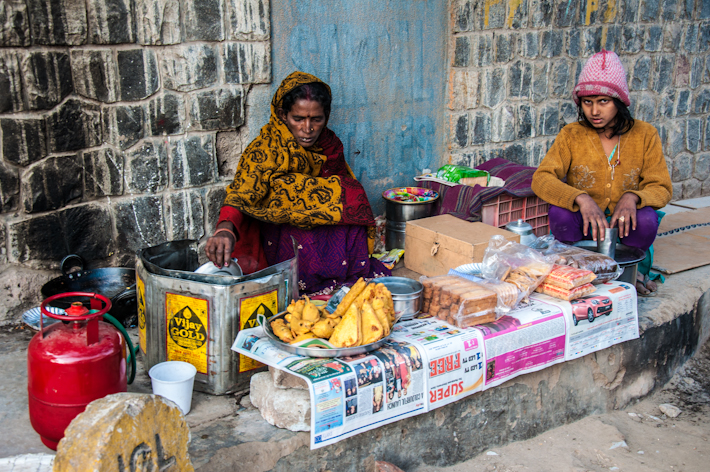
A lady that sells samosas for a living, with her daughter. The girl should probably be in school, but instead, she's attending the "school of life".
For example, when my friend Ayush goes for a haircut, he pays the hairdresser 100 Rupees (USD 1.84) to get a half hour head massage. Two days ago, Ashray got a full shave for 40 Rupees (USD 0.74) – aftershave, moisturizer and the works included! At home, Rani comes every single day (7 days a week) twice, to wash all the dishes, pots and pans. She gets paid 400 Rupees (USD 7.36) /month (Ashray’s Mom gives her a little extra, but this is actually her rate) and gets to do 4 or 5 houses – but the funny thing is that she is not paid by time spent working (like we would pay in Portugal). Instead, she is paid per task. Another 400 Rupees if you want her to sweep the floor! Our friend Sunny, living with his room-mate in Delhi, used to have a cook that would come to their apartment twice a day to cook breakfast and lunch. She’d come, get money from them, do the shopping and then the cooking for… wait for it… 500 Rupees (USD 9.20) a month. People manage to make a living by multiplying the number of houses they work at. Same goes for the man who washes the car everyday downstairs for 200 Rupees (USD 3.68) / month or the dhobi, the lady that presses the clothes using a coal iron so that she is not dependent on electricity; she charges 2 Rupees (USD 0.04) per piece, including pick-up and delivery at your door. The other day, we were checking out tiles for Ashray’s parents’ new home. There was a guy in the shop who’s sole job was to bring us water while looking at the merchandise. There are security guards for the most average establishments or buildings, guys that drive you around in bicycle rickshaws and will charge as little as USD1 for a couple of KMs (even at night, in the cold, carrying more than 1 person…), people selling pirated books at traffic lights (you can read about Steve Job’s life in a paperback book for as little as USD 0.50 – does that even cover the cost of the paper used, I wonder?), people that employ their time sewing clothes in the streets, boys that deliver groceries from the neighborhoods shops… and endless people selling knick knacks in the traffic lights, or frying samosas and other edibles in food street stalls. You have to make a living, and Delhi won’t fill your path with roses while you attempt to do so.
Delhi’s Government has recently launched a Delhi cash-for-food programme that gives a subsidy of 600 Rupees (USD 11.04) to feed poor families. I know a subsidy is an extra, not a salary per se, but it shocks me that Sheila Dikshit, New Delhi’s Chief Minister, states in public that this allowance of 600 Rupees is actually enough to feed a poor family of 5 for AN ENTIRE MONTH. I see the prices of things, even at the most regular markets and I tell you: no, it’s not. If you are going to feed your family plain boiled rice for breakfast, lunch and dinner, yes it is. But if you’re going to make it a tad nutritious and balanced, this is not enough. Still, this cash is definitely ”something”, a little bit of help.
Cash for food is better than food supplies. Why? Because the supply chains that are supposed to distribute food stuff for poor people in India who actually own a ration card and are entitled to those goods or subsidized prices, will many times take the food and sell it in the black market. So when a poor family lady tries to collect her ration they will just tell her “there is nothing this month, come back next month!”. It is very easy to take advantage of uneducated people when they are not fully aware of their rights. The fact that these supply chains (and people in the government) sell this food for their own profit is GENOCIDE! They have people dying in front of themselves – literally – and still they are worried about feeding their own pockets. MOTHERFUCKERS.
It’s crazy how the world goes bananas when 20 kids are shot in a USA school, but kids and adults are killed in India everyday (by this sort of indirect homicide) and it doesn’t make the news much anymore. I guess the value of life is not the same depending where you had the fortune or bad luck to be born at.
And it’s funny how religion has managed to find a way to comfort the poor though. Hindus believe in reincarnation and so many poor people believe that, if they are miserable and lead this kind of life, it’s actually because they must have done something bad in their previous life, so they deserve it. And all they can do is be good, so that they get a better chance in their next life, be born in a richer family, or a higher caste.
Omnipresent Smog & Trash
With the population density that we’re talking about – Delhi’s urban area includes almost 20 million people – that is twice my entire country! – trash management and pollution have become a problem.
With the current winter temperatures, a thick grey layer or smog has found its floating home above the city. It’s simply disgusting and the fact that you realize that you are breathing in these particles everyday and it will affect your health sooner or later makes it obvious for us that we do not to want to establish ourselves here. Not only there is pollution, but a very specific kind of pollution of particulate matter. Perfect! Let those particulate settle in your lungs and then we’ll see what happens!… Personally, I am tired of taking black dry nose buggers from my nose everyday or fighting head aches when I spend a few hours outside the house or stuck in traffic.
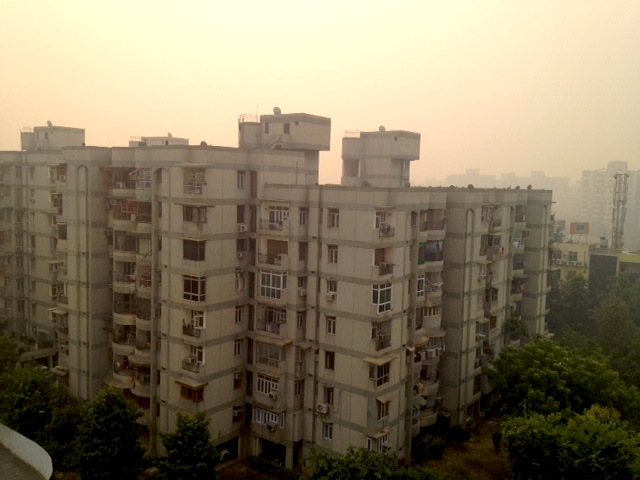
The view from our window in Delhi on a bad day: you see the building right in front, and the rest is just a smog hidden mystery!…
If someone has the option to be in Delhi or somewhere else (and I mean within India itself, not abroad) I wonder why the hell they’d prefer to stay here. Maybe the fact that local politicians not only do not acknowledge the pollution problem in Delhi but in fact state that there isn’t one, doesn’t help the case. On the other hand, some people don’t seem to get the difference between smog and fog and think what’s going on here is something out of a lovely winter postcard. If you are in doubt, just check the real-time reports: www.dpccairdata.com
Now that it is winter, the pollution problem is aggravated by the number of fires that people lit to warm themselves outside. You’ll see gate guards and poor people burning disposed materials to warm up their night and this obviously contributes to that lovely grey layer above our souls and that is difficult to dissipate due to climate reasons and the fact that Delhi happens to be a city inside a valley. I would obviously do the same if I was cold and outdoors myself – and it does get rid of some trash in the process if you try to look at it from “the bright side”!

I took their photo as they were warming up themselves, and they invited me to join them for breakfast!
Apart from the smog, the waste management problem is quite obvious – all across the city! Obviously richer areas are less affected and better maintained, but the truth is that trash is part of the life-style in Delhi and many other parts of India too. Sometimes you have to carry a paper with you for a while because you won’t find a trash can to dump it in – the closest might be a man-made pile of trash, that has been dug in by cows (those same ones that are supposed to be holy, but spend their days eating shit around town…), dogs, humans…
Recently Delhi has banned plastic bags and businesses are currently requesting you to bring your own bag for shopping (even boutiques!) or give you a paper or thin fabric bag. It’s a great start, no doubt about that, but the problem goes much further than this – the real root of the issue lives in the citizen’s mentalities and habits and this is something that will take a long time to be taken care of, I guess. It’s as if hygiene and proper garbage disposal is just not a concept for most people: you’ll see people throwing away trash anywhere, and this applies to higher class people too. Those that didn’t flush when I went to a medium-fancy cafe yesterday… because flushing their own turds is probably below them. Please!!
The fact that the place is over populated doesn’t help either. Who’d care about throwing the garbage in the right place if you don’t know what you’re eating next? It’s all a matter of priorities, and surviving always comes first.
Traffic
The intense concentration of traffic is one of the major causes for the high levels of pollution in Delhi. Public transportation (buses and autos) use environmental friendly fuel, but they are the minority of vehicles out there. The streets of India’s capital are synonym with chaos and anarchy.
The other day we were stuck in traffic and I got frustrated with the fact that trucks and buses where slowing things down by zig-zagging and entering the fast lane, so I said to Ashray: “these guys don’t understand the concept of slow lane and fast lane!!” Ashray laughed out loud and said: “These guys don’t have the concept of lane!”. And it is true: sometimes, the street will include 3 lanes but you’ll easily find 4 lanes of cars piling up alongside each other, plus a couple of other unofficial and stacked up lanes with bikes, autos and rickshaws, or even pedestrians walking amongst the fumes, against traffic and whatever other creative ways they manage. Oh yes, and cows too! Of course, this is India we’re talking about. People might not stop for a person to cross, but if you are a cow, then the world is your playground!
And don’t even get me started on traffic lights. I think that there must be some drivers that still think that lights are decoration. It is not at all unusual for you to stop at a red light (as it should be!) and have cars behind you honking desperately as if shouting “what the hell are you doing?! Move on already!”. The truth is that most people don’t actually go to driving school and purchase their driving licenses, who knows from where! In fact, out of all our friends, only 1 of them has gone for driving classes before getting his permit. And the sad part is that he failed and had to repeat the test. Much more expensive than getting the license in the black market – and he doesn’t drive particularly well either.
No matter if getting stuck in traffic is bad for the mental and pulmonary health, the truth is that I appreciate staying inside the car these days: heating works like a wonder! At home, we connect the blowers and the electricity goes off every now and then – there is not sufficient power to be provided to the entire population of this place. There are generators in the building (burning petrol into our lovely atmosphere once again!) but not everything runs on them. Luckily, internet still works and I can charge my laptop to blog. As I write, I sort of retain some of the mental sanity I still have got left.
- – - – -
This is the first part of my writings to share my observations living (temporarily) in Delhi.

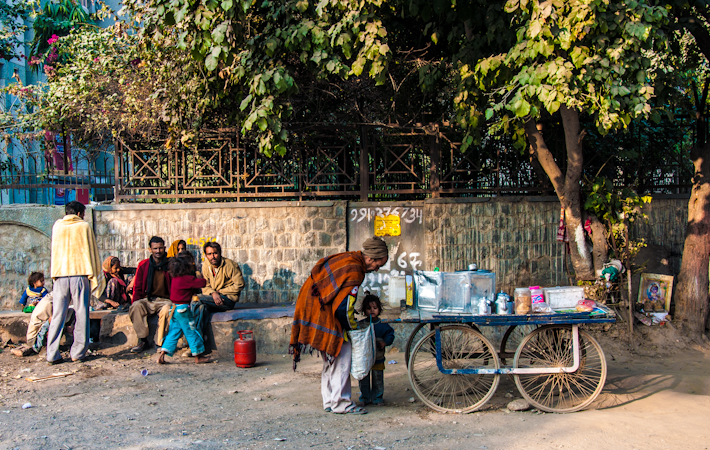







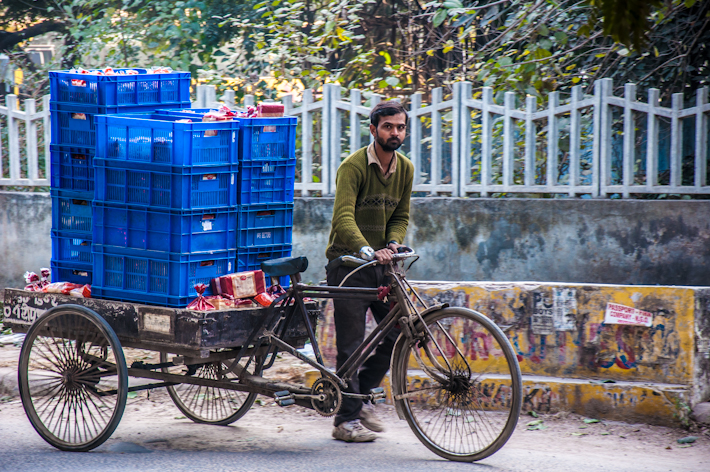


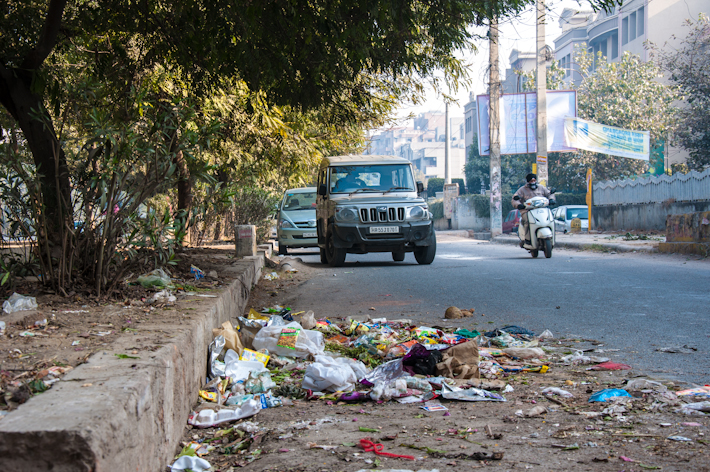


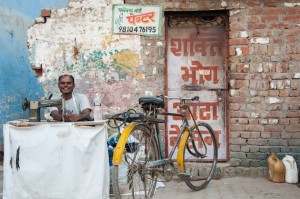
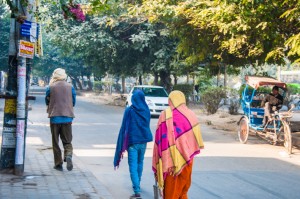
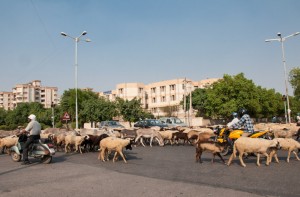
I guess for some people, family is more important than the clean air or pollution free atmosphere. May be that is the reason they are living here.
I understand that – this is exactly why I am in Delhi right now, to be with the family.
Still, I think that people tend to underestimate the pollution issue which in many cases results in serious health problems.
” pollution issue ” I totally agree with you. Every country/ city has got issues or problems. Here we have got too many people that is why it difficult to manage the city + thanks to corrupt politicians. But, I hope with time things will improve.
There are many good places here too. You have written only negative things about here. New Delhi is a very big city. Here, you can find what ever you want + it is a very happening place. It takes time to like this place for the people from outside especially to those who have got weak immunity.
When ever I travel, more I miss my place, my people here. It’s the people here that makes this place so special for me and not just the hygiene.
I hope in ur next post, I get to read good stuff about Delhi.
Welcome here :-)
You are right Prashant, I have focused mostly on the negative here. But as the title reads, it’s just part 1/2! ;)
Although it’s true that the harsh things that Delhi has are the most obvious at a first glance, I know there are many good things beyond poverty, trash, and all those stereotypes associated with the whole of India.
In my very first post in this section (http://bkpk.me/gora-coming-through/) I mentioned that I aim to talk about life in India beyond all of these obvious points that everyone knows about internationally, and I still keep that in mind. But I guess I had to start somewhere, and that somewhere had to be the things that have caught my attention the most since my arrival.
I know poverty and all these issues are over discussed in general, but believe me, for someone that comes from another side of the world, it is extremely difficult to pass by so many people in need everyday (particularly children) and not think about it, not feel bad. It takes time to assimilate such different realities.
I did mention I love the variety of veg food.. so there you go: 1 positive point already! ;) And there are many others, that will be talked about here on Backpack ME within my next posts too.
Thanks! :)
Delhi isn’t the kind of place I would settle either. South Delhi wasn’t as bad for me. But still… pretty busy & hectic compared to the rest of India.
Delhi does seem to be different from the rest of India. We recently traveled a bit in the South of the country and I found it more chilled out.
I actually had a good time reading about your travels in India on your blog. Lemme put the link here for those interested – it’s good stuff > http://gqtrippin.com/category/asia/india/
“I did mention I love the variety of veg food.. so there you go: 1 positive point already! ;) “… pleased to know that :) … but I hope you have got strong stomach =)) also people here are less cold hearted compared to other places.
“Delhi isn’t the kind of place I would settle either” thank you :-) it is already too much crowded.
Pingback: Surviving Delhi: The Beginning. Part 2/2 | Backpack Me
What an interesting read into life in Delhi. Thanks!
Thanks Karina! :)
Pingback: The Man with the Kinder Surprise | Backpack Me
For some reason, Delhi is my favourite place in India. Although I have not been there, I feel like this is the place I would love to live in for a while. The pictures of messy streets are shocking though. Great adventure Zara! Wish I was there ;-)
Agness, I think you should really come and see for yourself! ;)
Pingback: We’re in Hong Kong! | Backpack Me
Pingback: Holy Cow… it’s a self-service milk machine! | Backpack Me
Pingback: In Chawri Bazar | Backpack Me
Pingback: A&Z’s Adventures in Tamil Nadu: Puducherry | Backpack Me
Pingback: Most Popular Articles of 2013 | Backpack Me
Pingback: WOAH! 2 years on the road today! | Backpack Me
If I had to choose between living in Delhi for a minute or living in the post-apocalyptic wasteland in the Mad Max universe for a year, I would still choose the Mad Max universe. There is only so much pollution and traffic that one can handle. Being said that it is commendable that you showed Delhi in a balanced fashion.
And the part about Indians being majorly vegetarians is not necessarily true. The diet in the NCR region is primarily vegetarian, but go to Eastern or Southern India, you will find vegetarians in lesser numbers.